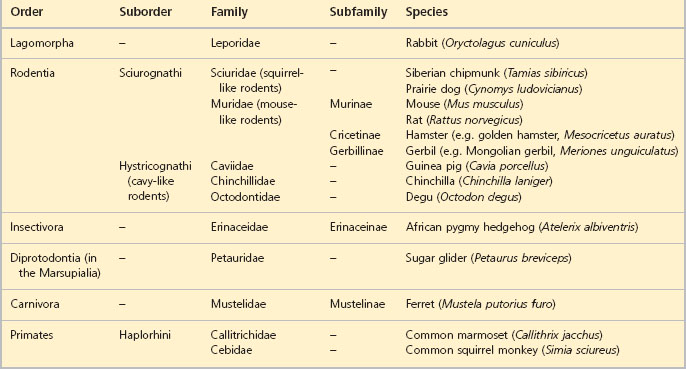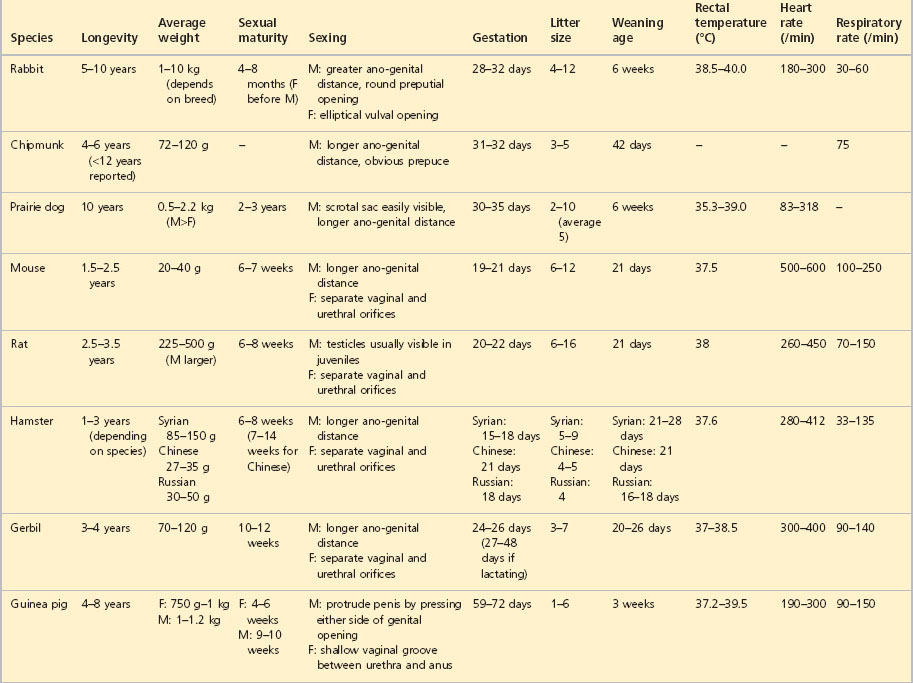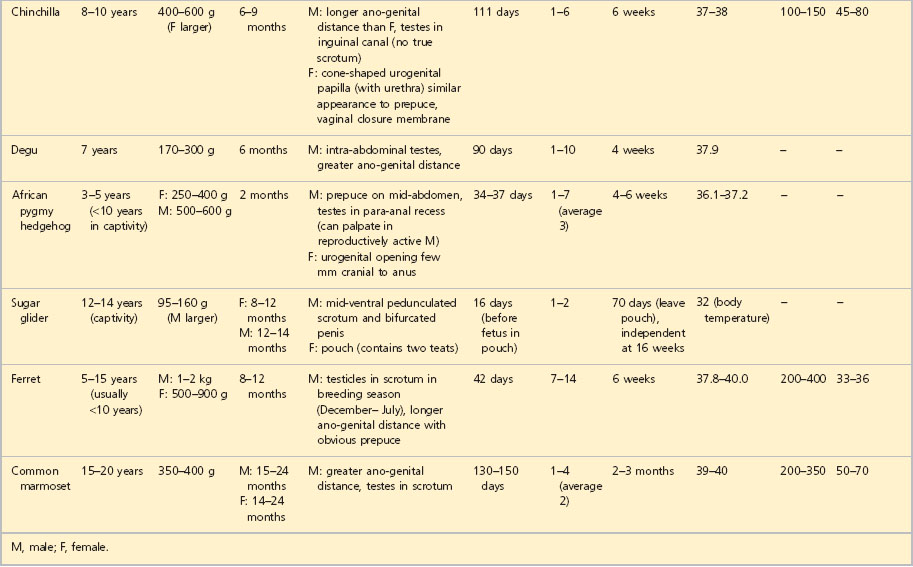2 Mammals – an introduction
Biology
This is a brief synopsis for common pet species. Further information may be found in Table 2.2, specific case reports later in the text or in references listed in the Further reading section.
History
Some pertinent topics to discuss with owners during the initial consultation with an exotic pet mammal are listed in Box 2.1. Although the basic outline is very similar to that for other companion animals, it is noteworthy that greater emphasis is paid to husbandry conditions (including housing and diet). This is to gain an understanding of any factors that may predispose disease in the animal. Unfortunately husbandry-related disease is common in exotic pets.






